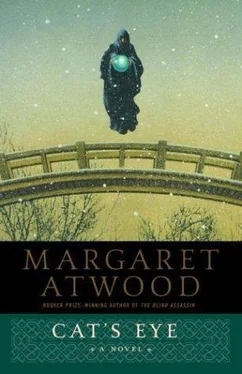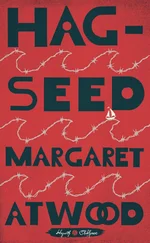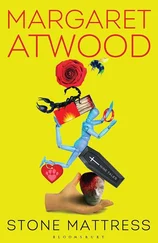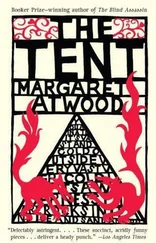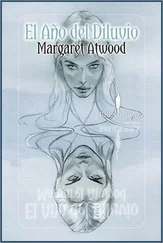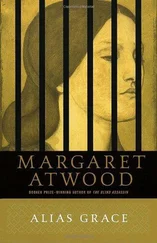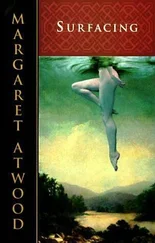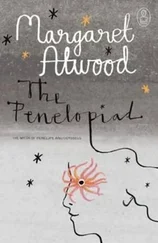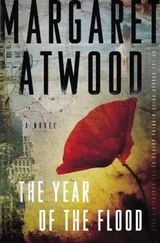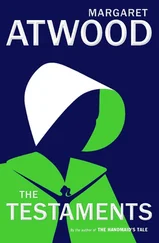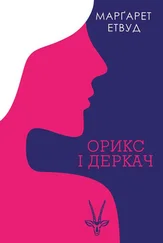Margaret Atwood - Cat's eye
Здесь есть возможность читать онлайн «Margaret Atwood - Cat's eye» весь текст электронной книги совершенно бесплатно (целиком полную версию без сокращений). В некоторых случаях можно слушать аудио, скачать через торрент в формате fb2 и присутствует краткое содержание. Жанр: Старинная литература, на английском языке. Описание произведения, (предисловие) а так же отзывы посетителей доступны на портале библиотеки ЛибКат.
- Название:Cat's eye
- Автор:
- Жанр:
- Год:неизвестен
- ISBN:нет данных
- Рейтинг книги:5 / 5. Голосов: 1
-
Избранное:Добавить в избранное
- Отзывы:
-
Ваша оценка:
- 100
- 1
- 2
- 3
- 4
- 5
Cat's eye: краткое содержание, описание и аннотация
Предлагаем к чтению аннотацию, описание, краткое содержание или предисловие (зависит от того, что написал сам автор книги «Cat's eye»). Если вы не нашли необходимую информацию о книге — напишите в комментариях, мы постараемся отыскать её.
Cat's eye — читать онлайн бесплатно полную книгу (весь текст) целиком
Ниже представлен текст книги, разбитый по страницам. Система сохранения места последней прочитанной страницы, позволяет с удобством читать онлайн бесплатно книгу «Cat's eye», без необходимости каждый раз заново искать на чём Вы остановились. Поставьте закладку, и сможете в любой момент перейти на страницу, на которой закончили чтение.
Интервал:
Закладка:
Farther along are Jon and Josef. I look at them with some fondness, them and their muscles and their cloudy-headed notions about women. Their youngness is terrifying. How could I have put myself into the hands of such inexperience?
Next to them is Mrs. Smeath; many of her. Mrs. Smeath sitting, standing, lying down with her holy rubber plant, flying, with Mr. Smeath stuck to her back, being screwed like a beetle; Mrs. Smeath in the dark-blue bloomers of Miss Lumley, who somehow combines with her in a frightening symbiosis. Mrs. Smeath unwrapped from white tissue paper, layer by layer. Mrs. Smeath bigger than life, bigger than she ever was. Blotting out God.
I put a lot of work into that imagined body, white as a burdock root, flabby as pork fat. Hairy as the inside of an ear, I labored on it, with, I now see, considerable malice. But these pictures are not only mockery, not only desecration. I put light into them too. Each pallid leg, each steel-rimmed eye, is there as it was, as plain as bread. I have said, Look. I have said, I see. It’s the eyes I look at now. I used to think these were self-righteous eyes, piggy and smug inside their wire frames; and they are. But they are also defeated eyes, uncertain and melancholy, heavy with unloved duty. The eyes of someone for whom God was a sadistic old man; the eyes of a small town threadbare decency. Mrs. Smeath was a transplant to the city, from somewhere a lot smaller. A displaced person; as I was.
Now I can see myself, through these painted eyes of Mrs. Smeath: a frazzle-headed ragamuffin from heaven knows where, a gypsy practically, with a heathen father and a feckless mother who traipsed around in slacks and gathered weeds. I was unbaptized, a nest for demons: how could she know what germs of blasphemy and unfaith were breeding in me? And yet she took me in. Some of this must be true. I have not done it justice, or rather mercy. Instead I went for vengeance. An eye for an eye leads only to more blindness.
I move to the west wall, where the new paintings are. They are larger than my usual format, and space out the wall nicely.
The first one is called Picoseconds. “A jeu d’esprit, ” says Charna, “which takes on the Group of Seven and reconstructs their vision of landscape in the light of contemporary experiment and postmodern pastiche.”
It is in fact a landscape, done in oils, with the blue water, the purple underpainting, the craggy rocks and windswept raggedy trees and heavy impasto of the twenties and thirties. This landscape takes up much of the painting. In the lower right-hand corner, in much the same out-of-the-way position as the disappearing legs of Icarus in the painting by Bruegel, my parents are making lunch. They have their fire going, the billy tin suspended over it. My mother in her plaid jacket bends over, stirring, my father adds a stick of wood to the fire. Our Studebaker is parked in the background. They are painted in another style: smooth, finely modulated, realistic as a snapshot. It’s as if a different light falls on them; as if they are being seen through a window which has opened in the landscape itself, to show what lies behind or within it.
Underneath them, like a subterranean platform, holding them up, is a row of iconic-looking symbols painted in the flat style of Egyptian tomb frescoes, each one enclosed in a white sphere: a red rose, an orange maple leaf, a shell. They are in fact the logos from old gas pumps of the forties. By their obvious artificiality, they call into question the reality of landscape and figures alike. The second painting is called Three Muses. Charna has had some trouble with this one. “Risley continues her disconcerting deconstruction of perceived gender and its relationship to perceived power, especially in respect to numinous imagery,” she says. If I hold my breath and squint, I can see where she gets that: all Muses are supposed to be female, and one of these is not. Maybe I should have called it Dancers, and put her out of her misery. But they are not dancers.
To the right is a short woman, dressed in a flowered housecoat and mules with real fur. On her head is a red pillbox hat with cherries. She has black hair and large golden earrings, and is carrying a round object the size of a beach ball, which is in fact an orange.
To the left is an older woman with blue-gray hair, wearing a waltz-length lavender silk gown. In her sleeve is tucked a lace handkerchief, over her nose and mouth is a gauze nurse’s mask. Above the mask her bright blue eyes look out, crinkly at the edges and sharp as tacks. In her hands she holds a globe of the world.
In the middle is a thin man with medium-brown skin and white teeth, smiling an uncertain smile. He is wearing a richly worked gold and red oriental costume reminiscent of Balthazar’s in Jan Gossaert’s Adoration of the Magi, but without the crown and scarf. He too holds out a round object: it’s flat like a disc and appears to be made of purple stained glass. On its surface are arranged, seemingly at random, several bright pink objects not unlike those to be found in abstract paintings. They are in fact spruce budworm eggs, in section; though I would not expect anyone but a biologist to recognize them. The arrangement of the figures recalls that of classical Graces, or else of the different-colored children wreathed around Jesus on the front of my old Sunday school paper. But those were facing in, and these are facing out. They hold their gifts forward, as if presenting them to someone who sits or stands outside the painting.
Mrs. Finestein, Miss Stuart from school, Mr. Banerji. Not as they were, to themselves: God knows what they really saw in their own lives, or thought about. Who knows what death camp ashes blew daily through the head of Mrs. Finestein, in those years right after the war? Mr. Banerji probably could not walk down a street here without dread, of a shove or some word whispered or shouted. Miss Stuart was in exile, from plundered Scotland still declining, three thousand miles away. To them I was incidental, their kindness to me casual and minor; I’m sure they didn’t give it a second thought, or have any idea of what it meant. But why shouldn’t I reward them, if I feel like it? Play God, translate them into glory, in the afterlife of paint. Not that they’ll ever know. They must be dead by now, or elderly. Elsewhere. The third picture is called One Wing. I painted it for my brother, after his death. It’s a triptych. There are two smaller, flanking side panels. In one is a World War Two airplane, in the style of a cigarette card; in the other is a large pale-green luna moth. In the larger, central panel, a man is falling from the sky. That he is falling and not flying is clear from his position, which is almost upside-down, slantwise to the few clouds; nevertheless he appears calm. He is wearing a World War Two RCAF uniform. He has no parachute. In his hand is a child’s wooden sword. This is the kind of thing we do, to assuage pain.
Charna thinks it’s a statement about men, and the juvenile nature of war. The fourth painting is called Cat’s Eye. It’s a self-portrait, of sorts. My head is in the right foreground, though it’s shown only from the middle of the nose up: just the upper half of the nose, the eyes looking outward, the forehead and the topping of hair. I’ve put in the incipient wrinkles, the little chicken feet at the corners of the lids. A few gray hairs. This is cheating, as in reality I pull them out. Behind my half-head, in the center of the picture, in the empty sky, a pier glass is hanging, convex and encircled by an ornate frame, In it, a section of the back of my head is visible; but the hair is different, younger.
At a distance, and condensed by the curved space of the mirror, there are three small figures, dressed in the winter clothing of the girls of forty years ago. They walk forward, their faces shadowed, against a field of snow.
Читать дальшеИнтервал:
Закладка:
Похожие книги на «Cat's eye»
Представляем Вашему вниманию похожие книги на «Cat's eye» списком для выбора. Мы отобрали схожую по названию и смыслу литературу в надежде предоставить читателям больше вариантов отыскать новые, интересные, ещё непрочитанные произведения.
Обсуждение, отзывы о книге «Cat's eye» и просто собственные мнения читателей. Оставьте ваши комментарии, напишите, что Вы думаете о произведении, его смысле или главных героях. Укажите что конкретно понравилось, а что нет, и почему Вы так считаете.
